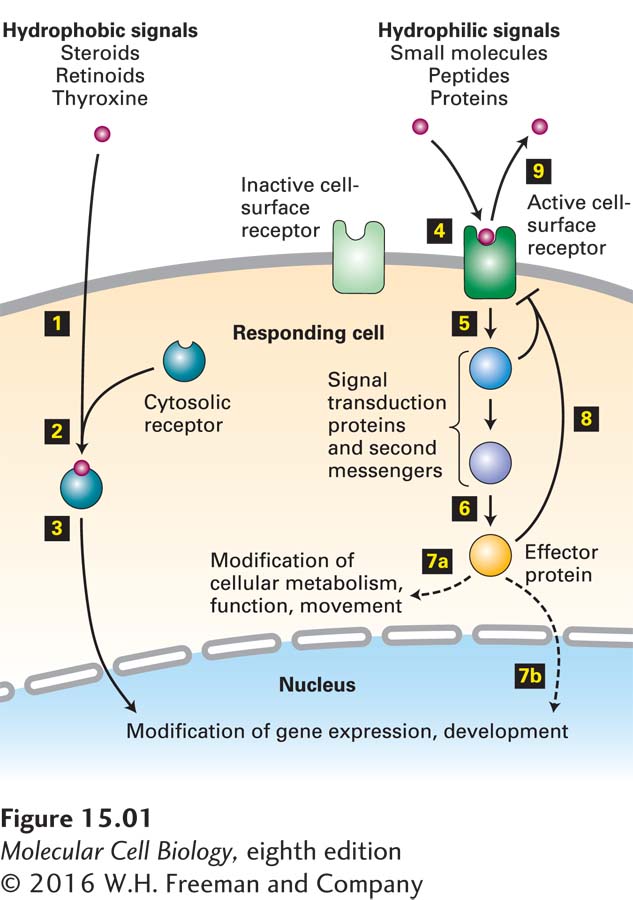
FIGURE 15- 1 Overview of cell signaling. Hydrophobic signaling molecules, such as steroids and related molecules, diffuse through the plasma membrane (step 1) and bind to receptors in the cytosol (step 2). The receptor- signal complex moves into the nucleus (step 3), where it can bind to transcription- control regions in DNA and activate or repress gene expression. The majority of signaling molecules, including small molecules (adrenaline, acetylcholine), peptides (yeast mating factors, glucagon), and proteins (insulin, growth hormone), are hydrophilic and cannot diffuse across the cell membrane. These molecules bind to specific cell- surface receptor proteins, triggering a conformational change in the receptor, thus activating it (step 4). The activated receptor then activates one or more downstream signal transduction proteins or small- molecule second messengers (step 5), which eventually leads to activation of one or more effector proteins (step 6). The end result of a signaling cascade can be modification of specific cytosolic proteins, predominantly enzymes, leading to short- term changes in cellular function, metabolism, or movement (step 7a). Alternatively, an effector can move into the nucleus, triggering a long- term change in gene expression (step 7b). Termination or down- modulation of the cellular response is often caused by negative feedback from intracellular signaling molecules (step 8) and by removal of the extracellular signal (step 9).
[Leave] [Close]